Understanding Offshore Lifting Operations And Engineering Analysis
Offshore lifting is a common operation in offshore construction or installation projects at sea. In this article, we will discuss offshore lifting operations and associated engineering analysis, safety precautionary measures, contingency plans, and challenges involved in lifting.
When is offshore lifting required?
- During offshore installation, i.e., Installing any process module, structure at the operation site
- When shore crane cannot perform the lifting. Sometimes, when a vessel is berthed port side, but it’s required to lift up or install equipment in starboard side, which cannot be reached by the shore crane
- Shore crane with limited lifting capacity: Generally shore crane lifting capacity is only up to 200 tonnes. Equipment exceeding the capacity of the shore crane is usually lifted using floating crane
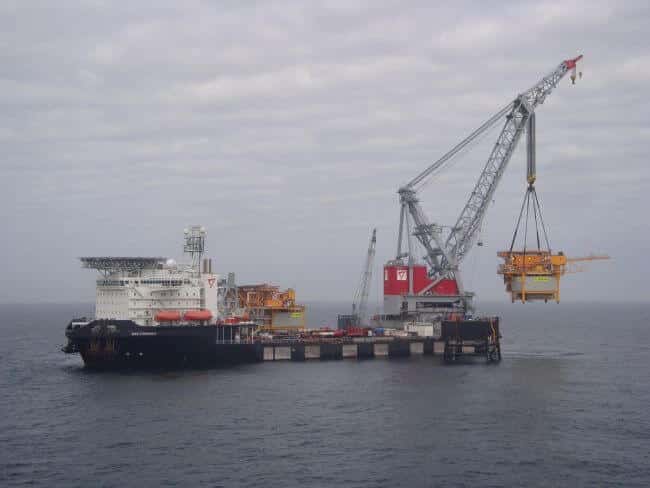
Examples of offshore lifting
- Offshore module lifting: Offshore vessels like FPSO, FLNGs have various process modules like chemical injection package, sulphate removal system, water injection system, etc.
- Offshore jacket platform installation in the offshore site
- New helideck installation
Challenges involved in offshore lifting
- Dynamic nature of ocean environment
- Lifting gears strength
We will address these challenges and will explain in detail, how to tackle these problems.
For example, a process module to be installed on FPSO. Let’s assume the weight of the module is about 1000 Tonnes.
Let’s consider the weight of the module is about 1000 Tonnes. The most basic requirement is the lifting crane supposed to be of a capacity higher than 1000 tonnes (As per norms, crane safe working load to be at least 1.25 times the weight of the equipment). Let us discuss how the load of the module is transferred to the crane. Load of the equipment is transferred to the crane through the lifting pad eyes, spreader beams, lifting wires, shackles etc. (In general, these are called as lifting gears). Hence all the lifting gears involved in the load transfer must be able to withstand the load imposed during the lifting operation. To analyse whether a lifting gear can withstand a given load, we must first estimate the load imposed on the lifting gear.
In the above lifting arrangements, the 1000 tonne module is lifted using 4-pad eyes. Hence each pad eye is subjected to a load of 250 tonnes. The sling wires transfer the load to the lifting beam. There are four wires used, hence each wire is subjected to 250 tonnes (For time being we will ignore effects due to sling angle). The sling wire transfers the load to the lifting beam. In this case, the lifting beam is subjected to 1000 tonnes (Note: the two pad eyes that transfer the load is subjected to 500 tonnes each).
SLING GEOMETRY
In the above load assessment, we assumed the sling angle to be 90 degrees. In reality, it is not 90 degree. The point of suspension of the equipment should always be in line with the centre of gravity of the equipment to avoid tilting of the equipment.
HOW LOADING CHANGES WITH SLING ANGLE?
Loading changes drastically with the sling angle. Following tables depicts the comparison of loading at 90®, 60®, 30® .
| 90 degree | 60 degree | 30 degree |
| Each sling is subject to a load of 500 tonnes
0% increase
|
Applying resolution of forces concept,
Load on one sling = Vertical load/sin(60). Vertical load =500 tonnes. Therefore load on one sling = 500/sin(60) =500/0.866 = 577.35 Tons
15.47% increase |
Applying resolution of forces concept,
Load on one sling = Vertical load/sin(60). Vertical load =500 tonnes. Therefore load on one sling = 500/sin(30) =500/0.5 = 1000 Tons
100% increase = 577 |
From the above table, we can understand how loads can drastically increase with the reduction in sling angles. Sling angle factors are critical in load assessment. Following Sling angle factors are given in ANSI B30.9.

LIFTING BEAM
-In figure 3, the lifting arrangement was depicted without the use of lifting beam. Usage of lifting beam helps to reduce the sling angle and thereby load on the sling.
From the above figure, it is evident how sling angle is increased using spreader beam (Ø>Q).
[the_ad id=’172861′]
LIFTING BEAM ANALYSIS
Bending and Buckling strength of the beam has to be assessed and proven they are within the requirement.
BENDING STRENGTH
Using Euler beam equation, we can find Bending stress s = M * I/y
Where s is Bending stress, M is the Maximum bending moment, while “I” is the second moment of area and y is the distance from the neutral axis.
In this case, the maximum bending moment can be evaluated as F1H* d.
The second moment of area is πr4/4 (Since the cross section of the spreader beam is circular.
As per class, s evaluated should not be greater than 0.6 * yield strength of the spreader beam material.
Note that in the above evaluation, the weight of the beam is ignored.
BUCKLING STRENGTH
F1H and F2H are potential forces to buckle the beam. Buckling check can be done by evaluating the Euler critical load. If the subjected load is greater than the Euler critical load then the beam will buckle.
Euler critical load P is given by : π2EI/(KL)2
Where E is the young’s modulus of the beam material, I is the Moment of Inertia , K is effective length factor and L is the unsupported length.
Effective Length Factor
Below figure can be used to find out the effective length factor (K).
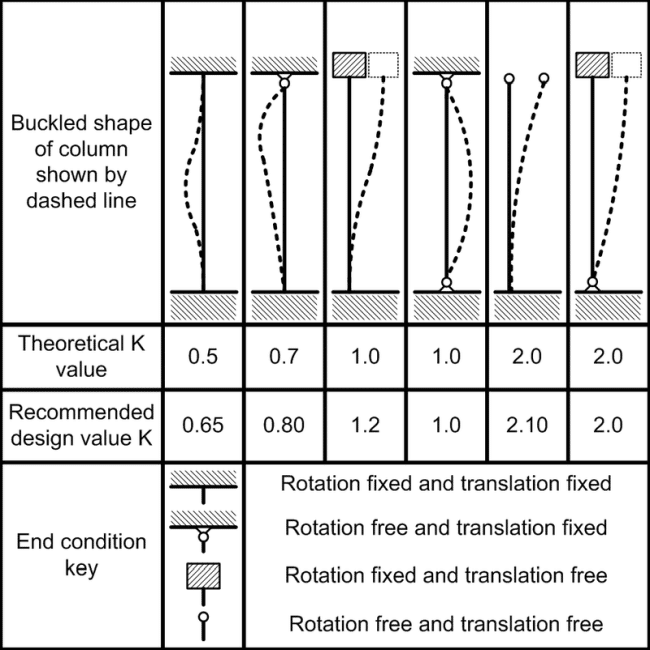
In addition to the buckling check, compressive stress due to the forces F1H, F2H must be less than 0.6* yield strength of the material.
PAD EYE STRESS ANALYSIS
FORCE ANALYIS
Pad eye is subject ted following forces:
1) Shear force
2) Axial force
3) Normal force
The tension T should be resolved in 3d to estimate the shear force ( the force that is parallel to the plane), axial force ( the force that is in-line with the axis of pad eye ), normal force ( the force that is normal to the plane).
[the_ad id=’173168′]
SHEAR STRESS
Shear stress = shear force/shear area.
Shear stresses are to be less than 0.4 times the yield stress.
BEARING STRESS
Bearing stress is the contact pressure onto a body. It is given by Design load/bearing area.
Bearing stresses are to be less than 0.9 times the yield stress.

BENDING STRESS
As seen earlier, Using Euler being equation we can find Bending stress s = M * I/y
Where s is Bending stress, M is the Maximum bending moment, while “I” is the second moment of area and y is the distance fro the neutral axis.
Bending stresses are to be less than 0.6 times the yield stress.
NOTE: Pad eye bore has to be compatible to the lifting shackle. For example, 20 Tonnes pad eye bore diameter should be large enough for a 20 Tonne shackle pin.
EQUIVALENT STRESS
As we have seen earlier the loading on the pad eyes are multiaxial, hence there is a combination of shear and bending. Vonmisses stress gives an equivalent stress that can be used to assess the strength in multiaxial loading condition.
DYNAMIC EFFECTS
Offshore lifting is dynamic in nature due to the ocean waves, currents, wind forces etc. It is important to include the dynamic effects into the calculation as these can significantly influence the results.
CRANE TIP MOTIONS
Relative motion between the crane tip (carrying the object to be lifted) and the waves should be established. The time period of crane tip motion can be formulated as follows:
T = 2π x √((M +A33 + θ)/k)
where
m = mass of hoisting line per unit length [kg/m]
L = length of hoisting line [m]
M = mass of object in air [kg]
A33 = heave added mass of object [kg]
K = stiffness of hoisting system
θ = adjustment factor taking into account the effect of the mass of hoisting line and possible soft springs.
The Crane tip motion period is compared with the significant wave period and ensured both are not close to causing resonance.
DYNAMIC AMPLIFICATION FACTOR
All the formulae we saw earlier in this article did not account for dynamic effects. They are good to use in a static condition (still water condition). Lifting in dynamic conditions requires slight modification to the formula. All the equation has to be multiplied by a factor called dynamic amplification factor.
Total force = Force (Static) X DAF.
Various classification societies have given recommended DAF for various scenarios which can be used in the calculations. DAF can also be established from model testing.
BUMPER AND GUIDES
Bumper and guides are positioned in such a way to prevent the lifting object (for example module) to strike against any other structure or object during the lifting operation.
LIFTING A SUBMERGED OBJECT
Load on the crane ( and lifting gears) lifting a submerged object can be evaluated by the following equation:
F(static) = Mg – ρVg.
Where M is the mass of the object.
g is acceleration due to gravity, 9.81m2/s.
ρ is the density of water.
V is the displaced volume of the submerged object.
SAFETY PRECAUTIONS DURING OFFSHORE LIFTING
- Perform risk assessment prior to the lifting
- Mooring analysis and ensure mooring lines are intact
- Detailed lifting plan
- The lifting zone completely cordoned off. Only authorised personnel are allowed to access the lifting zone
- Lifting should be headed by a lifting supervisor
- Lifting team should include: Lifting supervisor, rigger, signalman, banks man, crane operator.
- Lifting team should be properly briefed prior to lifting
- Clash check should be done in the lifting route( or path) and ensure no obstruction during lifting operation
- Prior to lifting, inspect all the lifting gears and ensure they are all intact and fit for use
- Ensure all the sea fastenings are removed from the equipment to be lifted and it is free to lift
- In any case, no one should be under the suspended load
CONTINGENCY PLANS
High speed gust wind (Before lifting)
- Counter check on the mooring lines.
- Add additional mooring lines as precautionary measures.
- Hold the lifting operation until the situation is normal.
High-speed gust wind (After lifting)
- Keep all mooring lines tensioned.
- Tugs to push or pull to against wind force;
- Add additional mooring lines as precautionary measures.
Mooring Line Broken
- Deploy tugs to control the vessel movement.
- Add additional mooring lines to control the vessel movement
Floating Crane grounded
- Constantly monitor the hook load and vessel floating status.
- Taking sounding over a period of time to ensure the vessel in intact.
The article gives a brief summary of offshore lifting. In addition to the topics covered (Sling geometry, Sling wire analysis, Lifting beam analysis, Pad eye analysis and Dynamic effects during lifting) in the article, mooring analysis, motion analysis does play a critical role in offshore lifting analysis. These topics are profound, hence will be dealt separately in a different article.
You may also like to read:
What is Basic Offshore Safety Induction and Emergency Training (BOSIET)?
How Subsea Components Of ROV Sustain Tremendous Seawater Pressure?
Disclaimer: The authors’ views expressed in this article do not necessarily reflect the views of Marine Insight. Data and charts, if used, in the article have been sourced from available information and have not been authenticated by any statutory authority. The author and Marine Insight do not claim it to be accurate nor accept any responsibility for the same. The views constitute only the opinions and do not constitute any guidelines or recommendation on any course of action to be followed by the reader.
The article or images cannot be reproduced, copied, shared or used in any form without the permission of the author and Marine Insight.
Do you have info to share with us ? Suggest a correction
Subscribe To Our Newsletters
By subscribing, you agree to our Privacy Policy and may receive occasional deal communications; you can unsubscribe anytime.



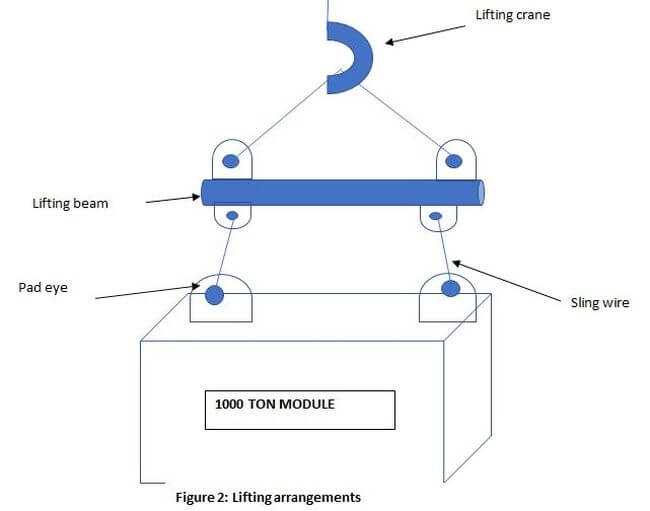
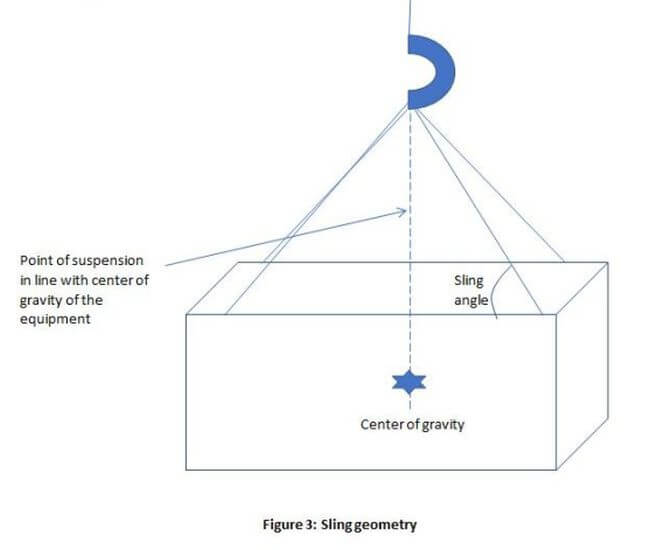

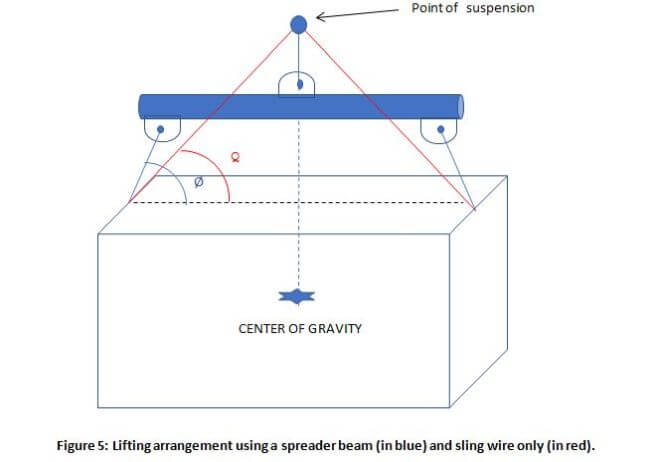
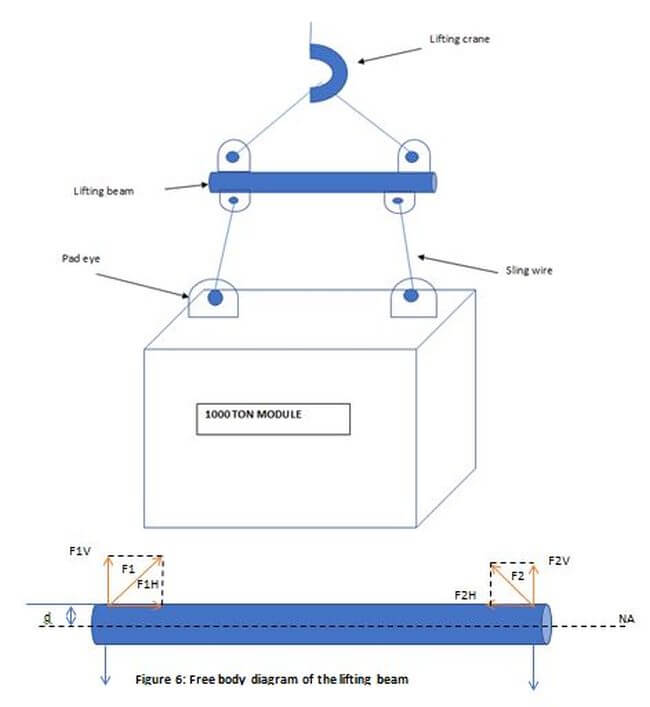

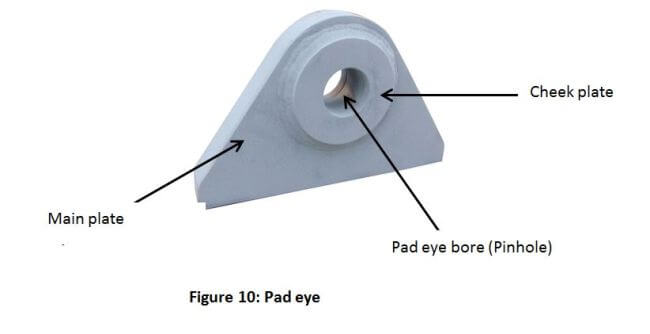

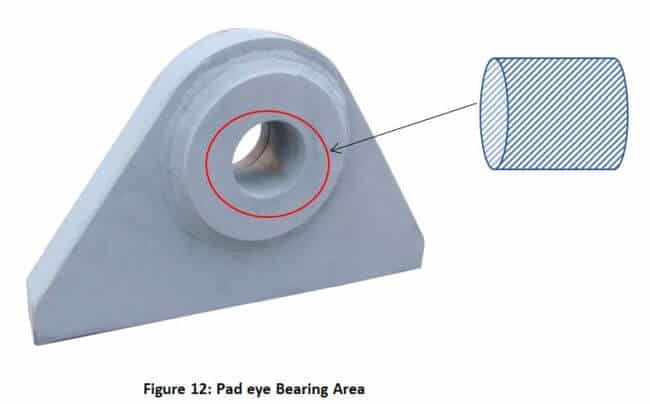
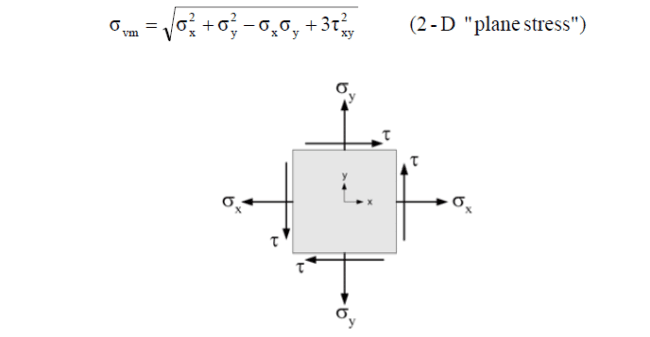

Thank you for all of the very useful material you have provided, Vignesh. I will cherish them. Here are my e-mail addresses:
Private: jaime.sotelo007@gmail.com; jaime_s@optusnet.com.au; jaime.sotelo007@yahoo.com
Work: jaime.sotelo@baesystems.com
I am on Facebook, you can send me an invitation, if you are also on Facebook. My Facebook entry appears as: Jaime A Sotelo.
I am also in Skype, and my Skype ID is:
Jaime Antonio Sotelo
By the way, I am a professional Engineer, having graduated from the University of New South Wales, with a Major in Naval Architecture.
Please tell me more about yourself.
Best regards,
Jaime A Sotelo
Mobile no.: +61 415 607 756
This article must have played a significant role in the life of operators.
Hi Vignesh
Many thanks for the article, does the DAF factor only apply to the crane (which should be in the duty charts?) or should the DAF calculation be taken throughout the whole lifting configuration ie everything below the crane hook?
Many thanks
Iain
what is limit wave height wind speed draft, pitching rolling angle , swell for lifting operation and where it come from, and how to determine